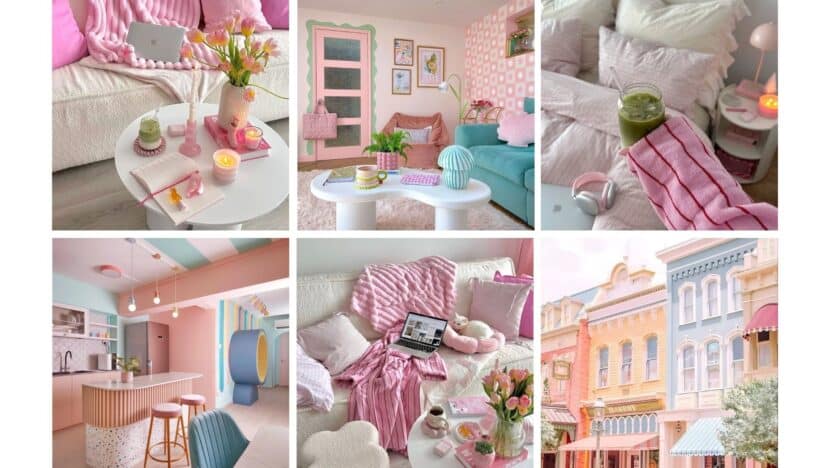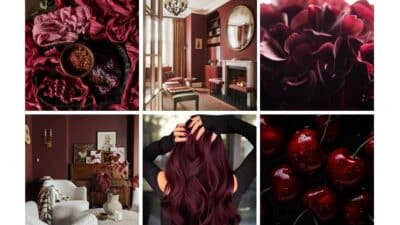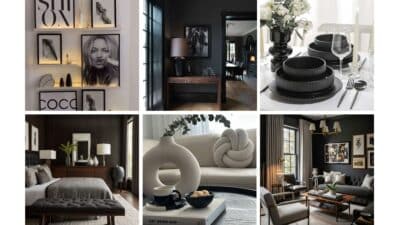Soft pastel palettes can transform your bedroom and bathroom into calm, inviting spaces that feel balanced and timeless. By combining gentle hues like blush, mint, lavender, or soft gray, you create a soothing atmosphere that promotes relaxation while keeping the space stylish. These colors work well together because they add subtle character without overwhelming the room.
You can pair pastel walls with neutral furniture for a clean look or mix different pastel tones for a more playful design. Small accents like bedding, towels, or decorative accessories also make it easy to bring in color without committing to a full makeover. Whether you prefer a minimal approach or a layered style, pastels offer flexibility that adapts to your taste.
Bathrooms benefit just as much as bedrooms from these soft tones. Light blues and greens can make the space feel fresh and airy, while peach or blush accents add warmth. With the right combinations, you can achieve a cohesive flow between the two rooms, turning them into a serene retreat.
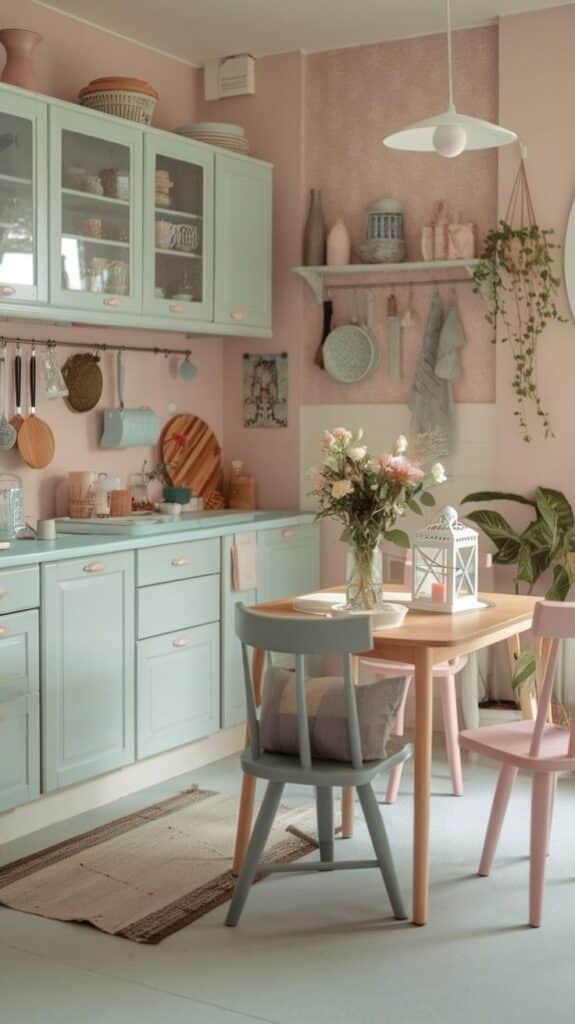
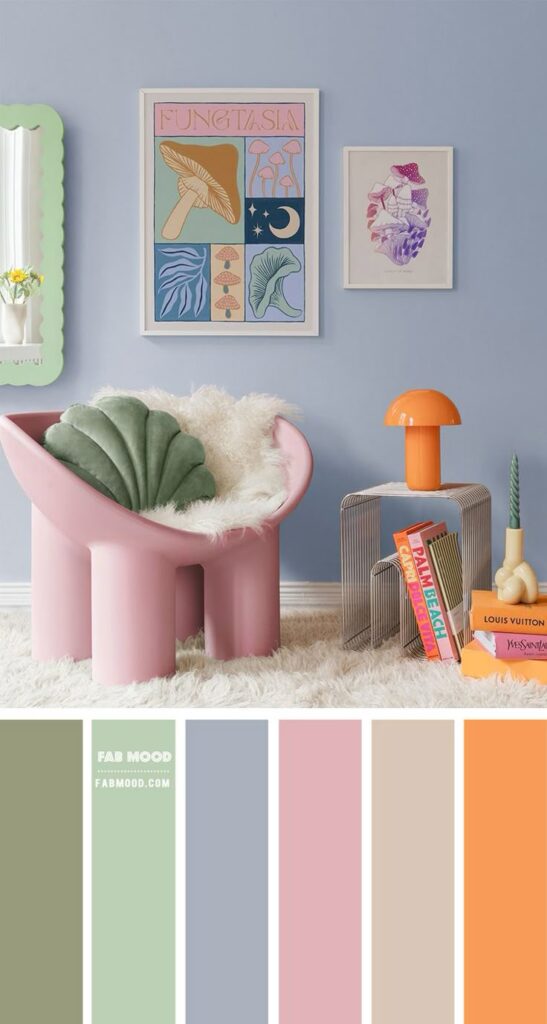
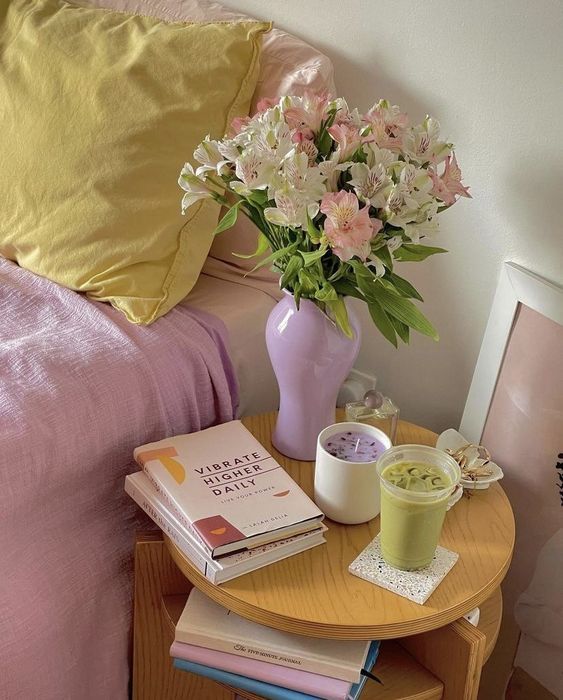
Key Takeaways
- Pastel palettes create calm and stylish bedroom and bathroom spaces
- Soft color combinations offer flexibility for different design preferences
- Small accents and thoughtful pairings make pastels easy to incorporate
Understanding Pastel Palettes for Bedrooms and Bathrooms
Pastel palettes bring a soft balance of color and calmness into personal spaces. By choosing pastel tones, you can create rooms that feel gentle, relaxing, and visually open without overwhelming the eye.
What Are Pastel Colors?
Pastel colors are muted versions of brighter hues created by adding white to a base color. This process lightens the shade, giving it a softer and more delicate appearance.
Common pastel hues include blush pink, baby blue, mint green, lavender, peach, and soft yellow. These shades often appear airy and light, making them distinct from bold or saturated colors.
In design, pastel palettes are versatile. You can use them as the main color scheme or as accents within a neutral foundation. For example, pairing pastel walls with white or beige furniture creates a balanced look.
Because pastel tones reduce visual intensity, they work well in both small and large rooms. They help reflect light, making bedrooms and bathrooms appear brighter and more spacious.
Benefits of Using Pastels in Interior Design
Pastel shades offer practical advantages beyond aesthetics. They create a soothing backdrop that doesn’t distract from other design elements. This makes them perfect for spaces where you want comfort and clarity.
In bedrooms, pastel palettes encourage rest by avoiding overstimulation. In bathrooms, they add freshness and a spa-like quality that supports relaxation.
Another benefit is their compatibility with different styles. Pastel tones can fit into minimalist, Scandinavian, coastal, or even vintage-inspired interiors. You can mix them with wood, metal, or natural textures without clashing.
Pastel colors also adapt well to seasonal changes. You can refresh a room by swapping accessories—such as bedding, towels, or wall art—without changing the main palette.
How Pastel Palettes Influence Mood
Color psychology suggests that pastel hues can promote calmness and positivity. Soft tones like lavender or sky blue are often linked to relaxation and stress relief.
In bedrooms, these shades help you wind down at the end of the day. A pastel palette can make the space feel safe, quiet, and uncluttered.
Bathrooms benefit from pastels too. Mint greens and pale aquas evoke cleanliness and freshness, while peach or blush tones add warmth without heaviness.
Because pastel colors are gentle on the eyes, they reduce visual fatigue. This makes them especially helpful in creating environments where you want to recharge and feel at ease.
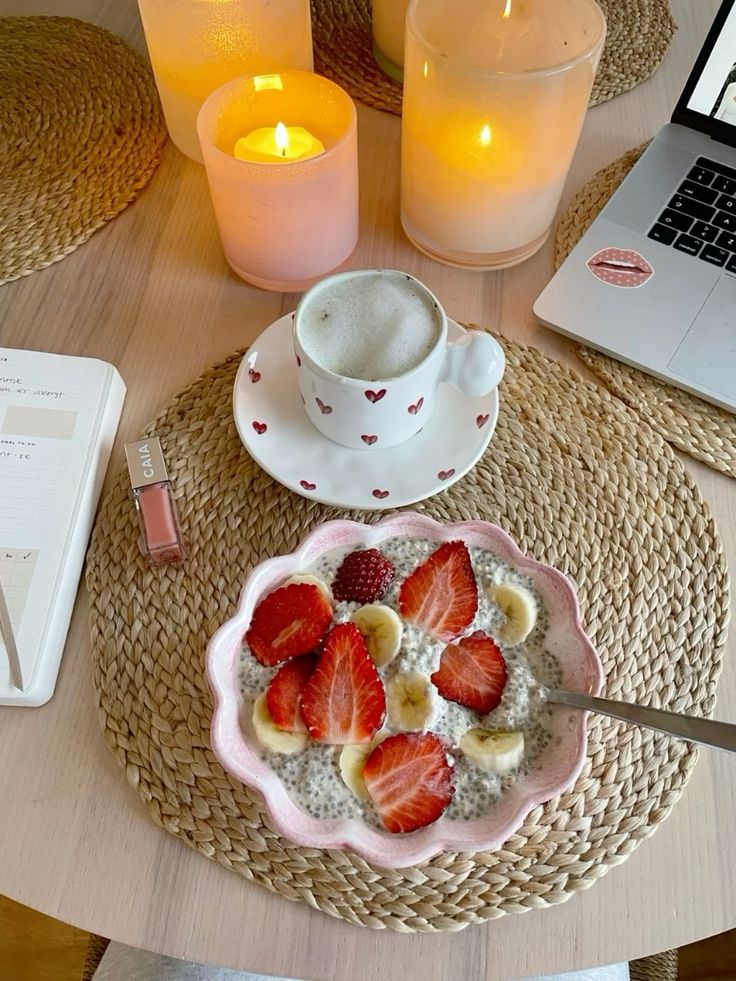
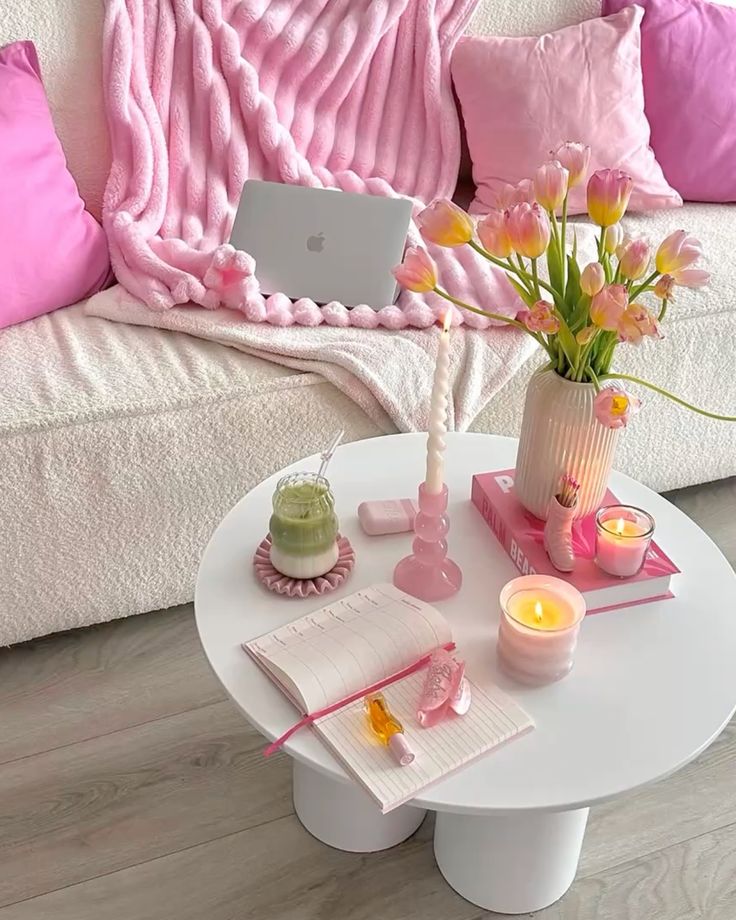
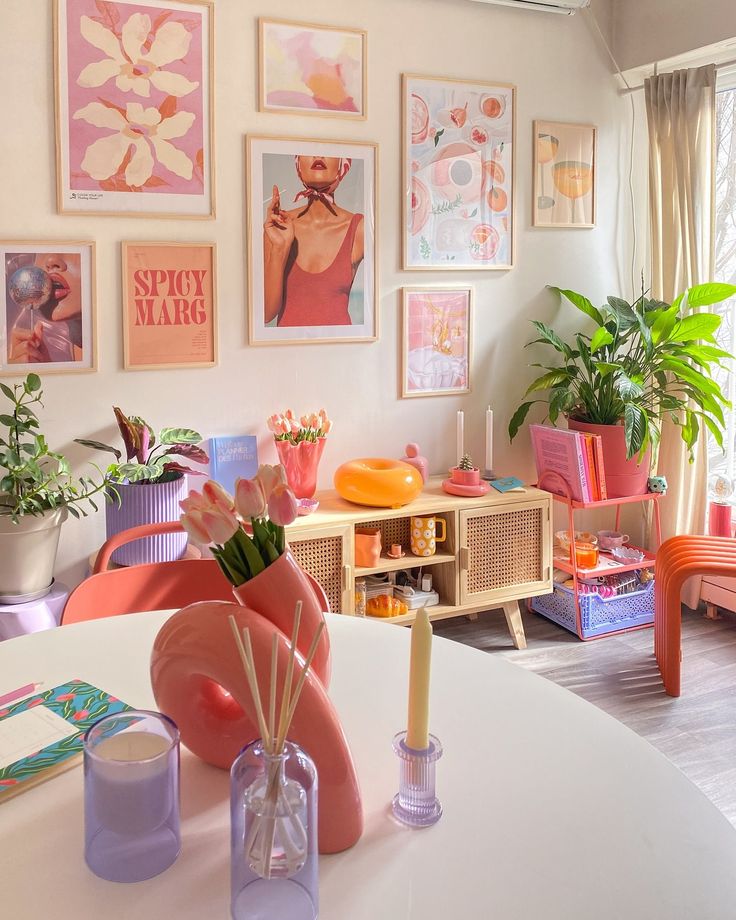
Popular Pastel Color Combinations
Soft pastel color combinations bring balance and comfort to bedrooms and bathrooms. Pairing shades like mint green with blush pink or pale peach with powder blue creates contrast while keeping the mood calm and inviting. These palettes work well for both small and large spaces, adding personality without overwhelming the room.
Blush Pink and Mint Green
Blush pink and mint green create a refreshing mix of warmth and coolness. The pink adds a gentle, welcoming tone, while mint green introduces a crisp and airy feel. Together, they keep the space light and soothing.
You can use blush pink bedding or towels with mint green walls or tiles for a balanced look. This combination works well in both bedrooms and bathrooms because it feels soft but not overly delicate.
To avoid the palette feeling too sweet, add neutral accents like white or light gray. These tones help ground the space and keep it versatile. A small table in natural wood or a mirror with a simple frame can finish the look without distraction.
Soft Lavender and Dusty Rose
Soft lavender and dusty rose lean into a more romantic pastel palette. Lavender brings a cool, calming effect, while dusty rose adds depth with its muted warmth. The result feels cozy and inviting without being heavy.
This pairing works especially well in bedrooms. You might choose lavender walls paired with dusty rose bedding or drapes. The colors complement each other without creating sharp contrasts, making the room feel harmonious.
For bathrooms, consider lavender tiles with dusty rose accessories like bath mats or storage baskets. Adding metallic details in brushed gold or matte black can give the palette a more modern edge.
Powder Blue and Pale Peach
Powder blue and pale peach create a soft, balanced palette that feels both fresh and warm. The pale blue brings a sense of calm, while pale peach adds a gentle glow. This makes the combination ideal for spaces where you want relaxation and comfort.
In bedrooms, try powder blue walls with pale peach textiles such as throws or cushions. The mix works well with white furniture, which keeps the room looking clean and uncluttered.
For bathrooms, pale peach towels or storage baskets soften the look of powder blue tiles. Adding plants with green leaves can bring in a natural touch that ties the palette together.
Pale Coral and Light Blue
Pale coral and light blue form a cheerful yet subtle pairing. Coral adds a touch of warmth, while light blue keeps the palette cool and calming. This balance makes the combination versatile for both modern and traditional interiors.
In bedrooms, you can use light blue bedding with pale coral accent pillows or artwork. The result feels lively but still restful. A pale coral rug can also anchor the room without being too bold.
Bathrooms benefit from this combination through light blue tiles paired with pale coral accessories like soap dishes or towels. If you prefer a softer finish, choose matte surfaces over glossy ones to maintain the pastel quality.
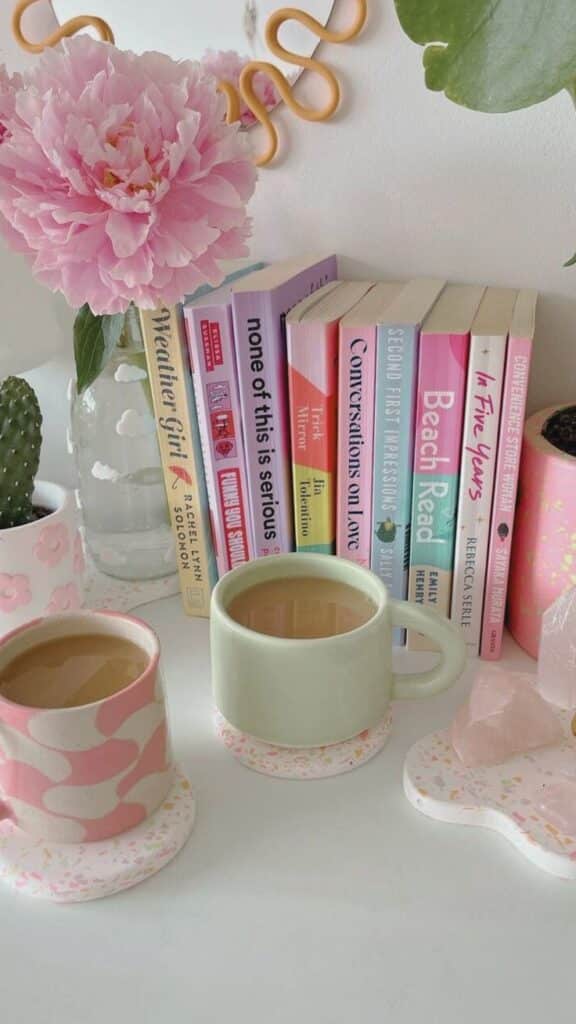
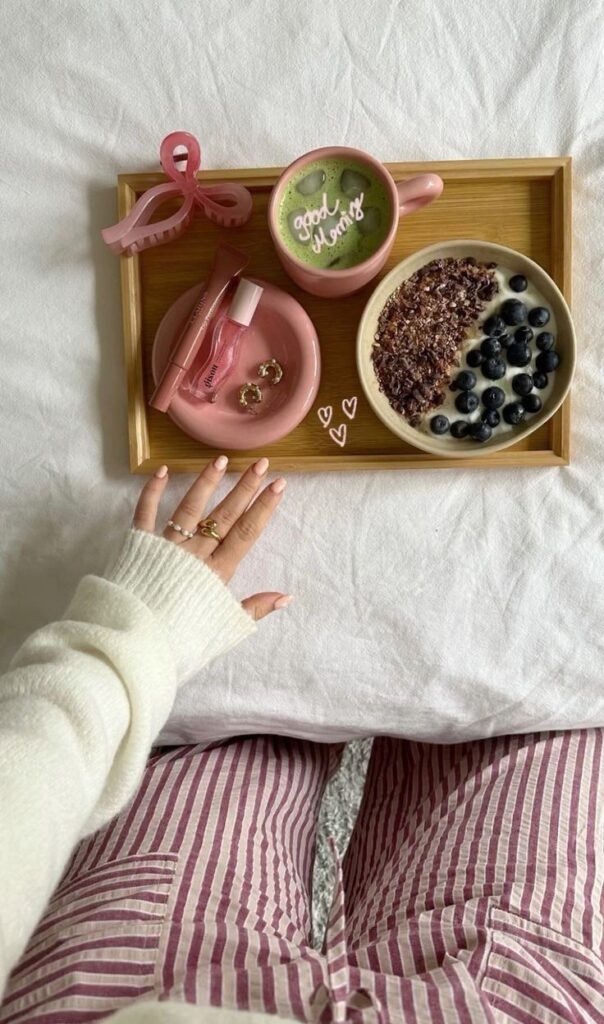
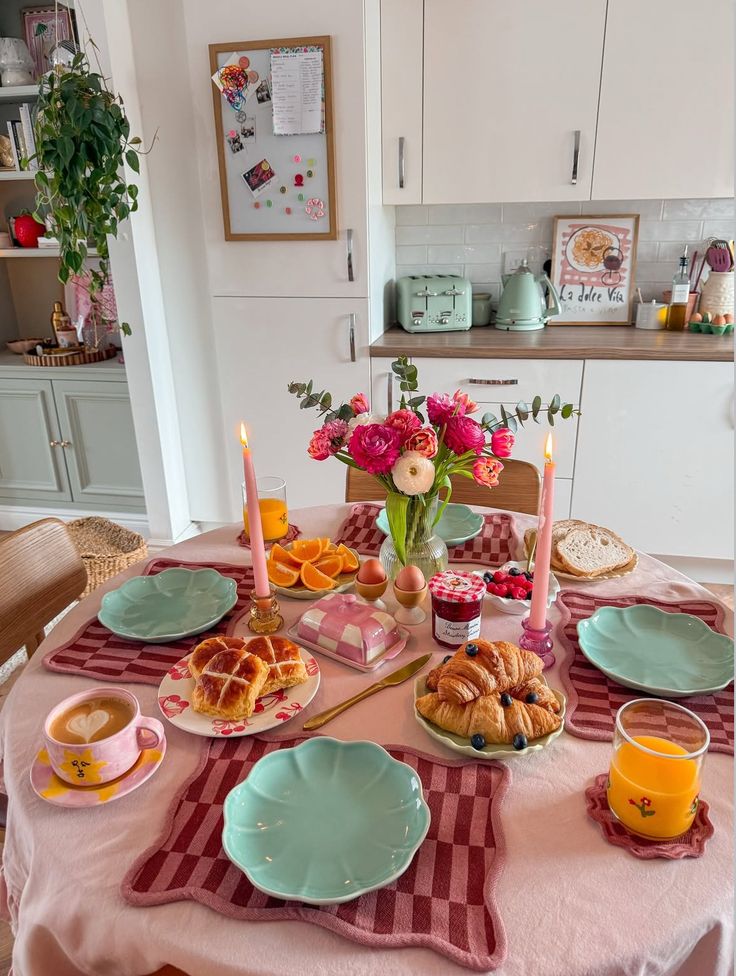
Designing a Pastel Bedroom
A pastel bedroom feels calm and inviting when you balance color, texture, and light. Soft shades, layered textiles, and a thoughtful mix of furniture and accents help create a space that feels both restful and personal.
Choosing the Right Pastel Shades
Start by selecting a main color that sets the tone for your room. Powder blue walls bring a cool, airy feel, while pale pink walls create warmth and softness. If you prefer a fresher look, soft mint walls add a subtle brightness without overwhelming the space.
You don’t need to stick to one shade. Pairing complementary pastels, like pale pink with soft blue, gives your bedroom more depth. For a soothing retreat, try muted tones such as lavender or dusty peach instead of overly bright pastels.
Think about how your chosen shades interact with natural light. A south-facing room can handle cooler tones, while a dimmer space may benefit from warm hues. Always test paint swatches on your walls at different times of day before committing.
Layering Pastel Bedding and Textiles
Your bedding is one of the easiest ways to bring pastels into the room. Lavender bedding feels calm and pairs well with yellow throw pillows for a cheerful contrast. If you prefer something lighter, soft blue or blush pink sheets are versatile and mix easily with patterned quilts or blankets.
Use layering to add comfort and style. Combine a pastel duvet with neutral sheets, then add a textured throw or two. Knitted blankets, quilted covers, and linen sheets in pastel tones create a cozy, lived-in look.
Textiles extend beyond the bed. Curtains, rugs, and cushions in similar shades tie the palette together. Keep patterns simple—stripes, checks, or small florals work well—so the pastels remain the focus.
Accent Walls and Furniture
An accent wall can anchor your pastel bedroom without overwhelming it. Painting one wall in soft blue or mint green gives definition, especially if the other walls remain neutral. Wallpaper with subtle pastel prints is another option for adding character.
Furniture choices also shape the look. A white or beige bed frame balances pastel walls, while a painted dresser in pale pink or powder blue adds charm. Upholstered headboards in muted tones can double as a soft focal point.
If you want variety, mix wood finishes with pastel-painted furniture. For example, a natural oak nightstand contrasts nicely with a pastel green dresser, keeping the room from feeling too uniform.
Incorporating Natural Light and Sheer Curtains
Natural light enhances pastel shades by making them appear brighter and softer. Keep windows unobstructed and avoid heavy drapes that block sunlight. Instead, use sheer curtains in white or a pale tint to diffuse light gently into the room.
During the day, sheer fabrics let in enough brightness to highlight your pastel walls and bedding. At night, they still provide privacy while maintaining a light, airy look. Layering sheer panels with blackout blinds gives you flexibility for sleep.
Position mirrors opposite windows to reflect natural light deeper into the room. This not only brightens the space but also makes pastel colors appear more vibrant without adding artificial intensity.
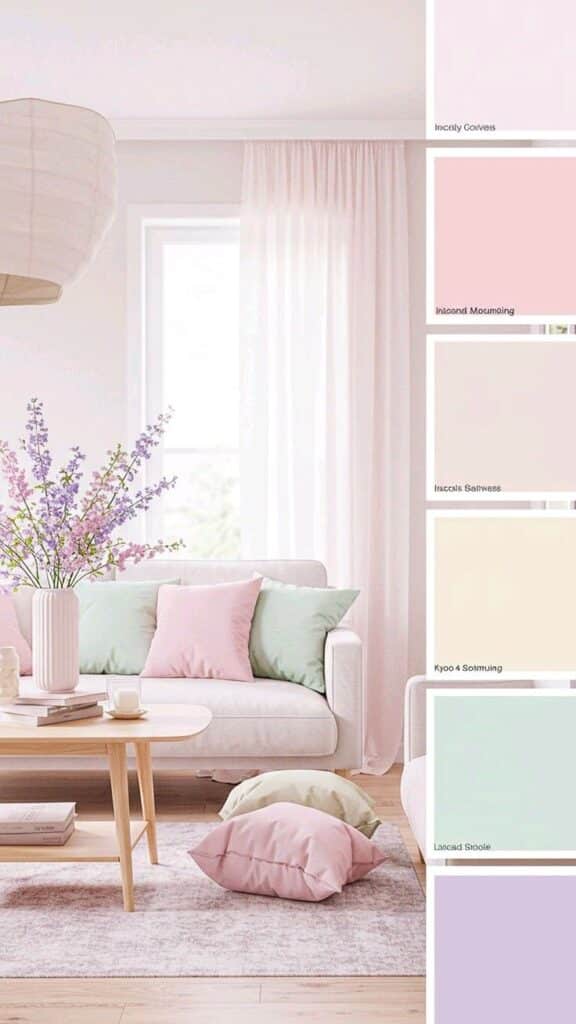
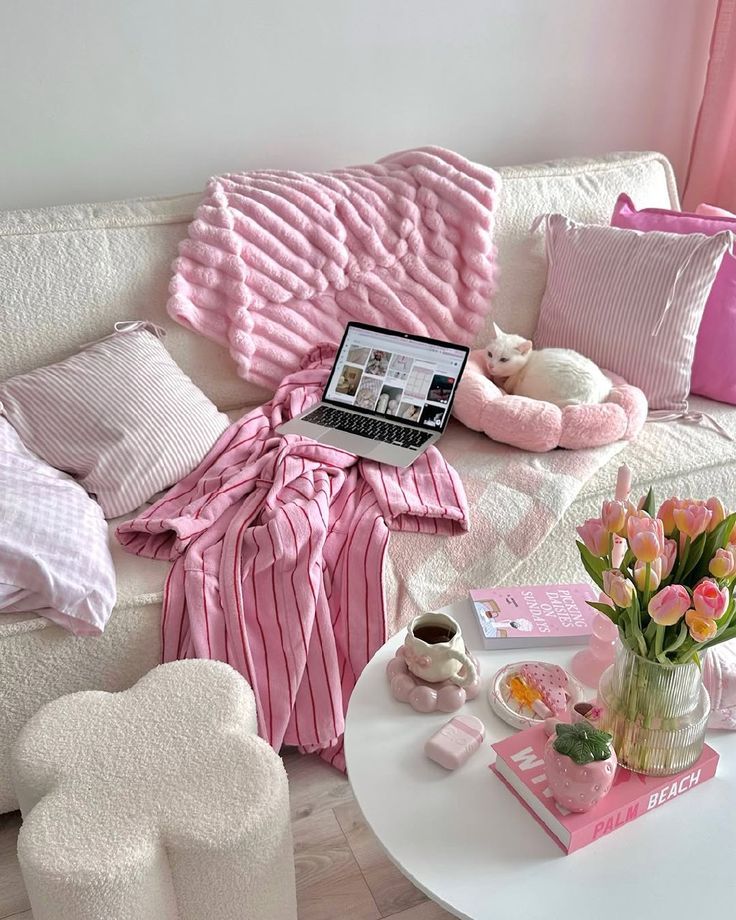

Creating a Serene Pastel Bathroom
A calm bathroom comes from pairing soft pastel hues with thoughtful materials, balanced tones, and subtle details. You can shape the atmosphere through your choice of tiles, wall colors, accents, and lighting while keeping the space practical and inviting.
Selecting Pastel Tiles and Paint
Start with the surfaces that define the room: tiles and wall paint. Pastel tiles in mint green, blush pink, or powder blue instantly set a gentle mood. You can use them across the shower wall, as a backsplash, or in small sections for a lighter touch.
Paint offers flexibility. A soft lavender wall pairs well with white trim, while a pale peach tone works best in smaller bathrooms to brighten the space. Stick with matte or eggshell finishes to reduce glare and maintain a relaxed look.
If you want variety, combine tiles and paint in the same pastel family. For example:
| Tile Shade | Paint Shade | Result |
|---|---|---|
| Mint Green | Pale Gray | Fresh and modern |
| Blush Pink | Warm White | Soft and airy |
| Powder Blue | Light Beige | Calm and balanced |
Mixing Pastel Accents with Neutral Tones
Pastels feel more refined when you balance them with neutral tones. White, beige, light gray, and even soft wood finishes prevent the colors from looking too sweet or overwhelming.
For example, a pastel green vanity looks cleaner when paired with a white countertop. A powder blue towel set feels more grounded against a light gray wall. These pairings keep the bathroom cohesive and easy on the eyes.
You can also layer different materials to add depth. Try pastel accessories with stone, wood, or matte black fixtures for contrast. This approach works especially well in modern bathrooms where you want subtle color without losing structure.
Soft Lighting and Accessory Ideas
Lighting has a big impact on how pastel shades appear. Warm LED bulbs create a soothing glow, while frosted glass fixtures soften brightness. Avoid harsh white lights that can make pastel hues look flat or cold.
Accessories help finish the space. Add pastel-colored towels, storage baskets, or soap dispensers to tie the palette together. Fresh flowers in soft tones, like pale roses or lavender sprigs, bring a natural element without overwhelming the design.
Mirrors framed in white or light wood reflect both light and color, making the bathroom feel larger. Even small touches—like a pastel bath mat or ceramic tray—can reinforce the calm atmosphere without requiring a full remodel.
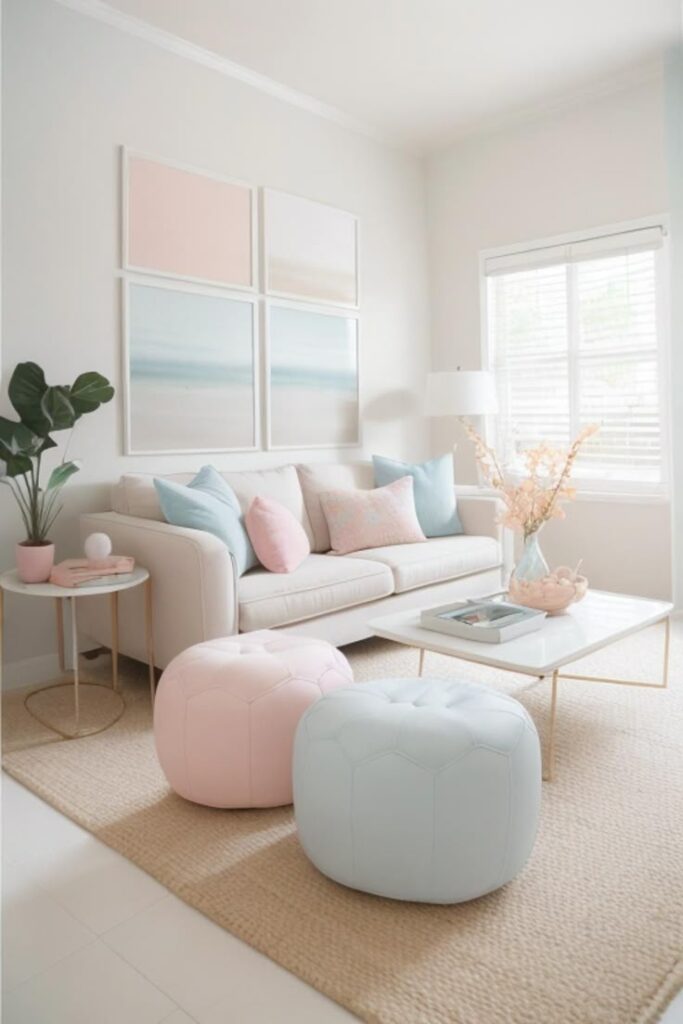
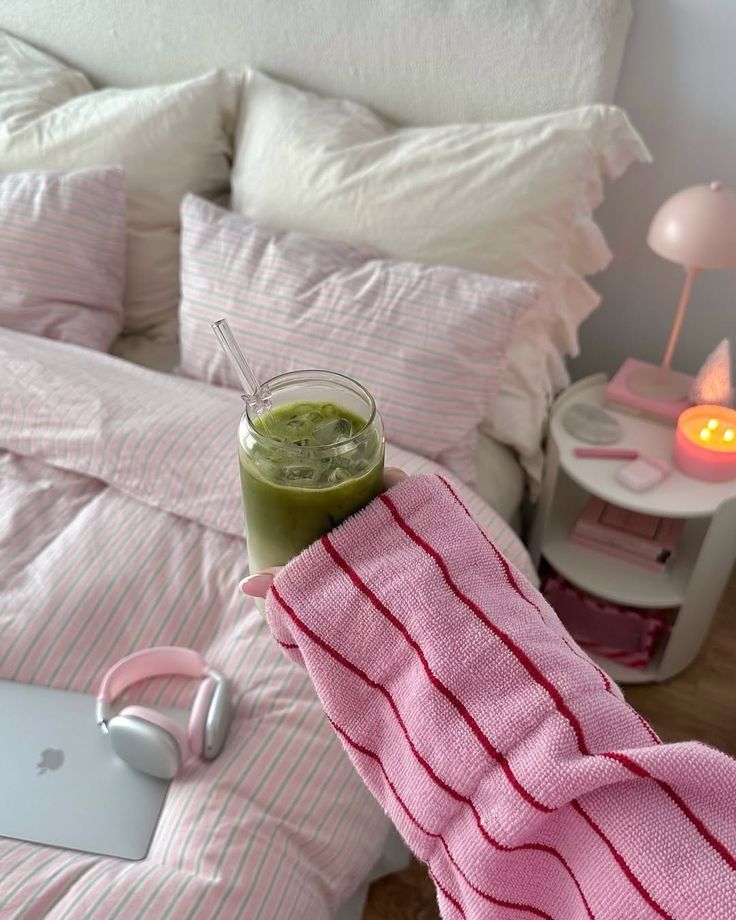
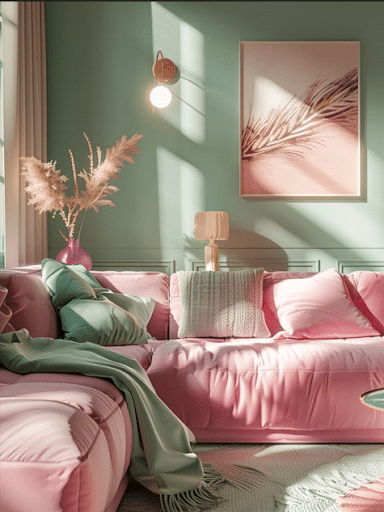
Tips for Styling with Soft Pastel Tones
Soft pastel tones work best when you focus on balance, bring in natural elements, and test colors before committing. Small adjustments in texture, greenery, and shade selection make a big difference in how the space feels.
Balancing Color and Texture
When you decorate with pastels, avoid making the room feel flat by mixing textures. A soft pink wall pairs well with natural linen curtains, a woven rug, or a matte ceramic lamp. These surfaces prevent the colors from blending into one another.
Try layering smooth finishes like painted wood with tactile fabrics such as cotton or boucle. For example:
| Pastel Shade | Texture Match | Example Use |
|---|---|---|
| Soft pink | Linen | Curtains |
| Warm peach | Woven jute | Rug |
| Soft peach | Matte ceramic | Lamp base |
Using this mix keeps the softness of the palette while adding depth.
Using Indoor Plants for Freshness
Indoor plants add a natural contrast to pastel tones. Their green leaves highlight the muted shades without overwhelming them. A small potted fern on a vanity or a trailing pothos on a shelf works well in both bedrooms and bathrooms.
Choose plants that thrive in the light conditions of your space. For a bathroom with humidity, peace lilies or bamboo palms are low-maintenance. In a bedroom, snake plants or ZZ plants add structure and require little care.
Place plants in neutral or white planters so they don’t compete with your pastel palette. This way, the greenery becomes a fresh accent instead of another color block.
Sampling Paint and Testing Combinations
Paint samples help you see how pastels look in real light. A soft peach swatch may appear warm in the morning but muted in the evening. Always test on more than one wall to check how shadows affect the tone.
Combine two or three pastels instead of filling the room with one shade. You might pair soft pink walls with warm peach bedding and white trim for balance.
Keep a small notebook or photo log of swatches and fabric samples. This makes it easier to compare combinations before making final decisions.


